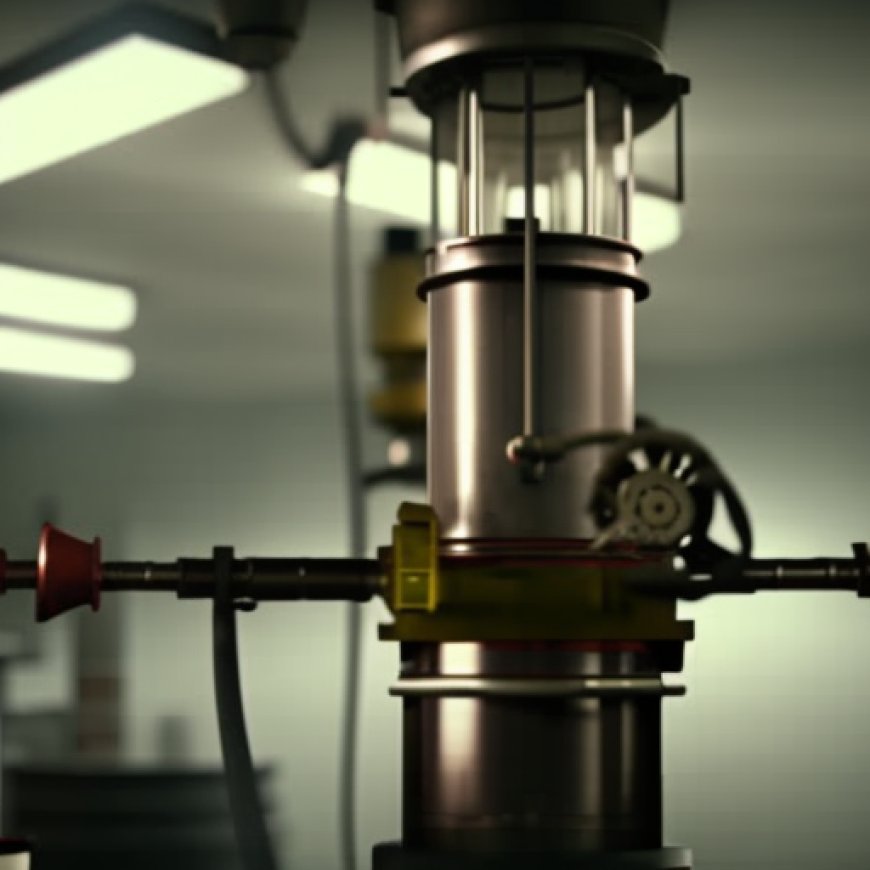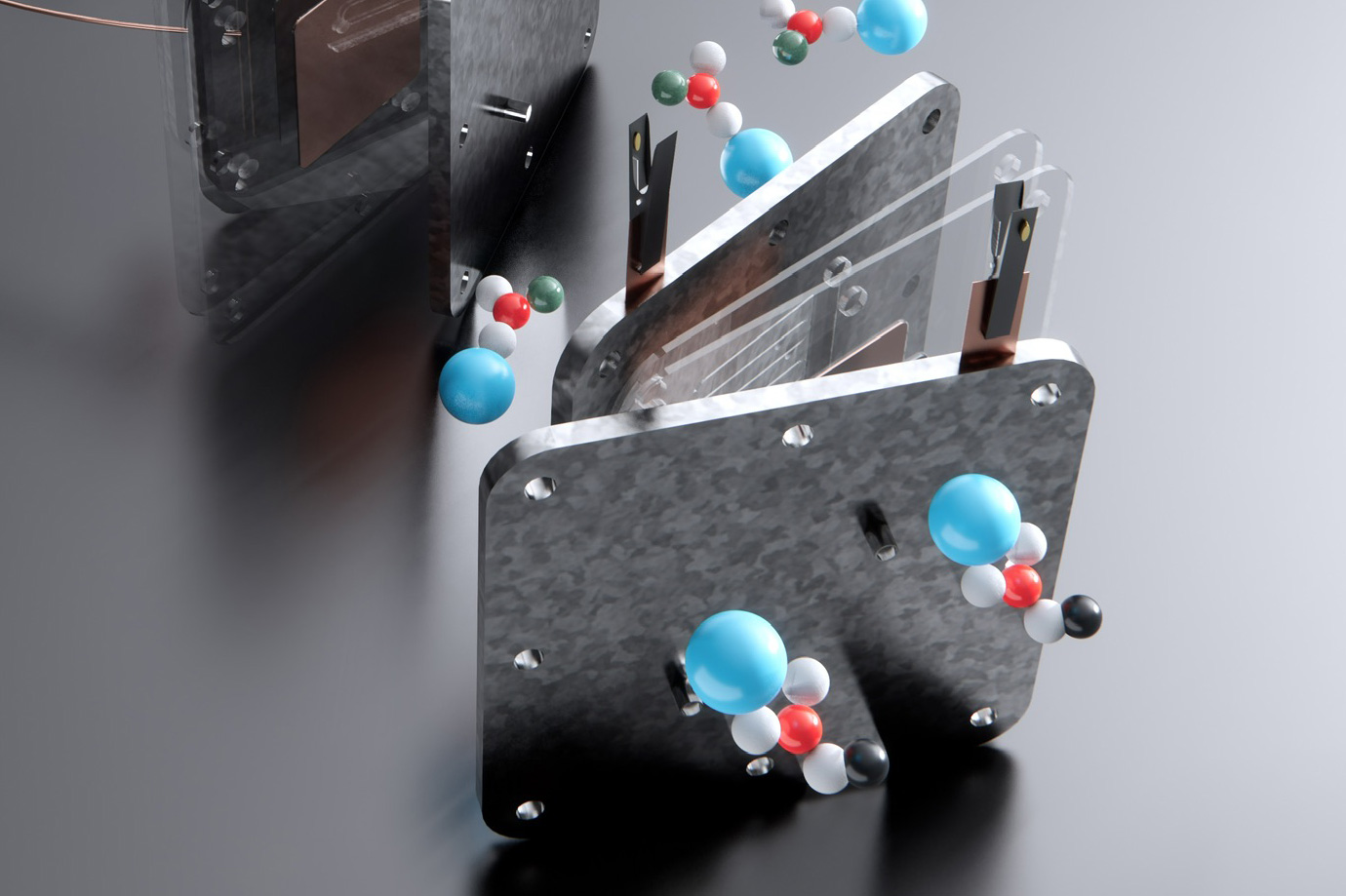Engineers develop an efficient process to make fuel from carbon dioxide
Engineers develop an efficient process to make fuel from carbon ... MIT News


The Search for Sustainable Carbon Dioxide Conversion

Introduction
The search for efficient methods to extract carbon dioxide (CO2) from the air or power plant exhaust and convert it into a useful substance is a global endeavor. One promising approach is the conversion of CO2 into a stable fuel that can replace fossil fuels in certain applications. However, most existing conversion processes suffer from low carbon efficiency or produce fuels that are difficult to handle, toxic, or flammable.
The Development of an Efficient Conversion Process
Researchers at MIT and Harvard University have developed an efficient process to convert CO2 into formate, a liquid or solid material that can be used as a fuel to power a fuel cell and generate electricity. Potassium or sodium formate, which is already produced at industrial scales and commonly used as a de-icer, is nontoxic, nonflammable, easy to store and transport, and can remain stable in ordinary steel tanks for extended periods.
Process Description
The new process, developed by MIT and Harvard researchers, involves the capture and electrochemical conversion of CO2 into solid formate powder. This powder is then used in a fuel cell to produce electricity. The entire process has been successfully demonstrated at a small laboratory scale and is expected to be scalable for emissions-free heat and power in individual homes, as well as industrial or grid-scale applications.
Advantages over Existing Approaches
Unlike other methods of converting CO2 into fuel, the new process achieves a conversion efficiency of over 90% and eliminates the need for an inefficient heating step. By first converting CO2 into a liquid metal bicarbonate, the process can then electrochemically convert it into liquid potassium or sodium formate using low-carbon electricity. The resulting highly concentrated solution can be dried to produce a stable solid powder that can be stored in ordinary steel tanks for years without significant loss.
Optimization and Efficiency
The research team made significant improvements to the process, resulting in a highly efficient conversion system. Careful design of membrane materials and their configuration ensures long-term, stable, and continuous conversion of the feedstocks. Thermodynamic modeling was used to achieve chemical balance and maintain a steady pH over time. The introduction of an extra “buffer” layer prevented unwanted side reactions, further enhancing efficiency.
Applications and Future Potential
The formate fuel produced through this process can be adapted for various applications, from household units to large-scale industrial or grid-scale storage systems. Initial household applications could involve a refrigerator-sized electrolyzer unit to capture and convert CO2 into formate, which can then be stored in underground or rooftop tanks. The solid powder can be mixed with water and fed into a fuel cell to provide power and heat. The researchers believe this technology has potential for use in factories and the grid.
Sustainable Development Goals (SDGs)
- SDG 7: Affordable and Clean Energy – The conversion of CO2 into formate fuel contributes to the goal of providing affordable and clean energy for all.
- SDG 9: Industry, Innovation, and Infrastructure – The development of this efficient conversion process supports innovation in sustainable industry and infrastructure.
- SDG 13: Climate Action – By capturing and converting CO2, this process helps mitigate climate change and reduce greenhouse gas emissions.
- SDG 17: Partnerships for the Goals – The collaboration between MIT, Harvard, and the support from the U.S. Department of Energy Office of Science exemplify the importance of partnerships in achieving sustainable development goals.
Conclusion
The development of an efficient process to convert CO2 into formate fuel represents a significant step towards achieving sustainable energy solutions. The high conversion efficiency, stability, and scalability of this process make it a promising candidate for replacing fossil fuels in various applications. With further optimization and implementation, this technology has the potential to contribute to the achievement of several Sustainable Development Goals.
Sources:
SDGs, Targets, and Indicators
-
SDG 7: Affordable and Clean Energy
- Target 7.2: Increase substantially the share of renewable energy in the global energy mix
- Indicator 7.2.1: Renewable energy share in the total final energy consumption
-
SDG 9: Industry, Innovation, and Infrastructure
- Target 9.4: Upgrade infrastructure and retrofit industries to make them sustainable, with increased resource-use efficiency and greater adoption of clean and environmentally sound technologies and industrial processes
- Indicator 9.4.1: CO2 emission per unit of value added
-
SDG 13: Climate Action
- Target 13.2: Integrate climate change measures into national policies, strategies, and planning
- Indicator 13.2.1: Number of countries that have integrated mitigation, adaptation, impact reduction, and early warning into primary, secondary, and tertiary curricula
Analysis
1. Which SDGs are addressed or connected to the issues highlighted in the article?
The issues highlighted in the article are connected to SDG 7 (Affordable and Clean Energy), SDG 9 (Industry, Innovation, and Infrastructure), and SDG 13 (Climate Action).
2. What specific targets under those SDGs can be identified based on the article’s content?
Based on the article’s content, the specific targets that can be identified are:
- Target 7.2: Increase substantially the share of renewable energy in the global energy mix
- Target 9.4: Upgrade infrastructure and retrofit industries to make them sustainable, with increased resource-use efficiency and greater adoption of clean and environmentally sound technologies and industrial processes
- Target 13.2: Integrate climate change measures into national policies, strategies, and planning
3. Are there any indicators mentioned or implied in the article that can be used to measure progress towards the identified targets?
Yes, there are indicators mentioned or implied in the article that can be used to measure progress towards the identified targets:
- Indicator 7.2.1: Renewable energy share in the total final energy consumption
- Indicator 9.4.1: CO2 emission per unit of value added
- Indicator 13.2.1: Number of countries that have integrated mitigation, adaptation, impact reduction, and early warning into primary, secondary, and tertiary curricula
Table: SDGs, Targets, and Indicators
| SDGs | Targets | Indicators |
|---|---|---|
| SDG 7: Affordable and Clean Energy | Target 7.2: Increase substantially the share of renewable energy in the global energy mix | Indicator 7.2.1: Renewable energy share in the total final energy consumption |
| SDG 9: Industry, Innovation, and Infrastructure | Target 9.4: Upgrade infrastructure and retrofit industries to make them sustainable, with increased resource-use efficiency and greater adoption of clean and environmentally sound technologies and industrial processes | Indicator 9.4.1: CO2 emission per unit of value added |
| SDG 13: Climate Action | Target 13.2: Integrate climate change measures into national policies, strategies, and planning | Indicator 13.2.1: Number of countries that have integrated mitigation, adaptation, impact reduction, and early warning into primary, secondary, and tertiary curricula |
Behold! This splendid article springs forth from the wellspring of knowledge, shaped by a wondrous proprietary AI technology that delved into a vast ocean of data, illuminating the path towards the Sustainable Development Goals. Remember that all rights are reserved by SDG Investors LLC, empowering us to champion progress together.
Source: news.mit.edu

Join us, as fellow seekers of change, on a transformative journey at https://sdgtalks.ai/welcome, where you can become a member and actively contribute to shaping a brighter future.







